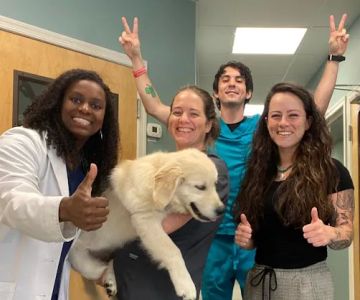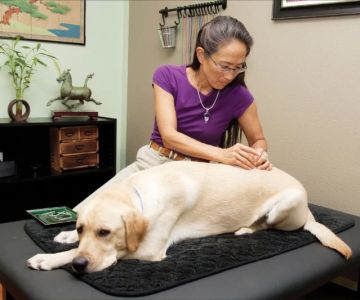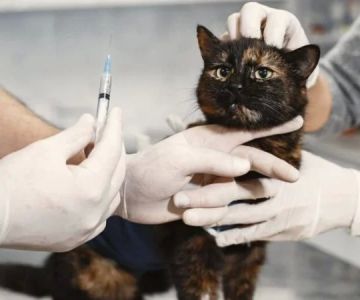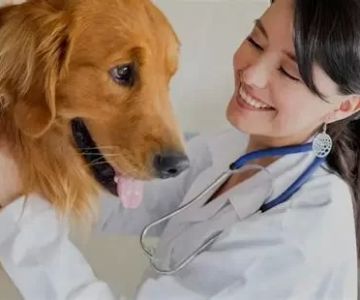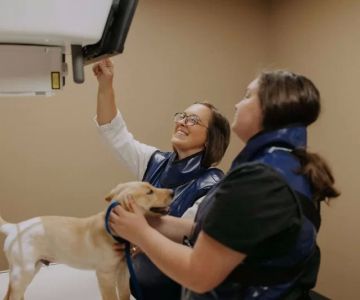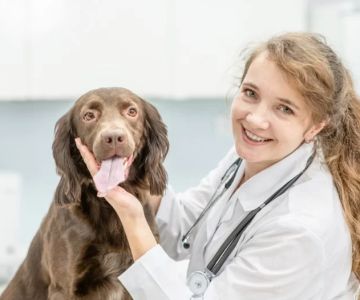- 1 - Understanding PU/PD in Veterinary Medicine
- 2 - Causes of PU/PD in Pets
- 3 - Diagnosing PU/PD in Pets
- 4 - Treatment Options for PU/PD in Pets
- 5 - When to Seek Veterinary Help for PU/PD
- 6 - Hidden Brook Veterinary Recommendations for Pet Care
1 - Understanding PU/PD in Veterinary Medicine
In veterinary medicine, the terms PU and PD refer to common symptoms that are often observed in pets, particularly in dogs and cats. PU stands for "polyuria," which refers to increased urination, while PD stands for "polydipsia," which refers to increased thirst. These symptoms, when seen together, are often indicative of an underlying medical issue that requires veterinary attention.
While it might seem normal for a pet to drink more water during hot weather or after exercise, excessive thirst and urination over an extended period could signal a serious health problem. PU/PD is not a disease in itself but rather a symptom of various conditions, ranging from kidney disease to diabetes. Understanding the meaning and implications of PU/PD is essential for pet owners, as it can lead to timely diagnosis and treatment.
2 - Causes of PU/PD in Pets
There are several potential causes of PU/PD in pets, and identifying the root cause is crucial for effective treatment. Some common conditions associated with these symptoms include:
1. Diabetes Mellitus
Diabetes is one of the most common causes of PU/PD in pets, particularly in cats and dogs. When a pet has diabetes, the body is unable to regulate blood sugar properly, leading to increased thirst and urination. If left untreated, diabetes can lead to severe complications, including kidney damage and even death.
2. Kidney Disease
Chronic kidney disease (CKD) is another leading cause of PU/PD in older pets. The kidneys are responsible for filtering waste from the bloodstream, and when they start to fail, the body struggles to maintain proper fluid balance, leading to increased thirst and urination. CKD is a progressive condition that requires veterinary intervention to manage symptoms and improve quality of life.
3. Cushing’s Disease
Cushing’s disease (also known as hyperadrenocorticism) is a hormonal disorder that can cause PU/PD in pets. It occurs when the adrenal glands produce too much cortisol, leading to symptoms such as excessive thirst, urination, and weight gain. Treatment typically involves medications to regulate cortisol levels or surgery in more severe cases.
4. Urinary Tract Infections (UTIs)
Urinary tract infections are another potential cause of increased urination in pets. While UTIs are typically associated with increased frequency of urination, they can also cause excessive thirst in some cases. UTIs can be painful and lead to more serious complications, such as kidney infections, if not treated promptly.
5. Liver Disease
Liver problems, including liver failure, can also cause PU/PD in pets. The liver plays a key role in many bodily functions, including the regulation of fluids and electrolytes. When it is damaged, it can lead to imbalances in the body that result in increased thirst and urination.
3 - Diagnosing PU/PD in Pets
If you notice that your pet is drinking more water or urinating more frequently than usual, it’s important to take them to a veterinarian for a thorough examination. Diagnosing the cause of PU/PD typically involves a combination of the following:
1. Physical Examination
A veterinarian will begin by performing a physical examination to check for signs of dehydration, weight loss, or other symptoms that may indicate an underlying condition. They will also inquire about your pet's medical history and recent behavior changes.
2. Blood Tests and Urine Analysis
Blood tests and urine analysis are essential for diagnosing conditions like diabetes, kidney disease, and liver problems. Blood tests can measure glucose levels, kidney function, and hormone levels, while urine analysis can provide insights into the concentration of urine, indicating the health of the kidneys and urinary tract.
3. Imaging Tests
In some cases, the vet may recommend imaging tests such as X-rays or ultrasounds to examine the internal organs. These tests can help identify conditions like tumors, kidney stones, or enlarged organs that may be contributing to the symptoms of PU/PD.
4 - Treatment Options for PU/PD in Pets
The treatment for PU/PD in pets depends on the underlying cause of the symptoms. Below are some common treatment options based on specific conditions:
1. Insulin for Diabetes
For pets diagnosed with diabetes, insulin therapy is the most common treatment. Insulin injections help regulate blood sugar levels, reducing the excessive thirst and urination associated with the condition. A veterinarian will work with you to determine the right dosage and help monitor your pet’s response to treatment.
2. Medications for Cushing’s Disease
If your pet is diagnosed with Cushing’s disease, medication may be prescribed to control cortisol production. In some cases, surgery to remove the tumor causing the excess cortisol production may be an option. Long-term treatment may be required to manage the symptoms of Cushing’s disease effectively.
3. Dialysis or Fluid Therapy for Kidney Disease
For pets with chronic kidney disease, treatment may involve intravenous fluid therapy or dialysis to help support kidney function. Medications to control blood pressure, reduce protein loss, and manage symptoms like nausea and lethargy are also commonly prescribed.
4. Antibiotics for UTIs
Urinary tract infections are typically treated with antibiotics to eliminate the infection. Depending on the severity, your veterinarian may recommend follow-up visits to ensure that the infection has been completely cleared and that there are no lingering issues.
5 - When to Seek Veterinary Help for PU/PD
If you notice any signs of PU/PD in your pet, it’s essential to seek veterinary care as soon as possible. Early intervention can prevent serious complications and ensure that your pet receives the appropriate treatment. If your pet is showing excessive thirst, urination, or other unusual behaviors, it’s better to be proactive and consult with your veterinarian to get an accurate diagnosis and begin treatment right away.
6 - Hidden Brook Veterinary Recommendations for Pet Care
At Hidden Brook Veterinary, we provide expert care for pets suffering from conditions like PU/PD. Our experienced veterinarians are equipped to diagnose and treat a wide range of health issues in pets. If your pet is experiencing signs of PU/PD, don’t wait—schedule an appointment today to get the best possible care for your furry friend.
Visit Hidden Brook Veterinary for trusted and compassionate care, tailored to your pet’s unique health needs.

